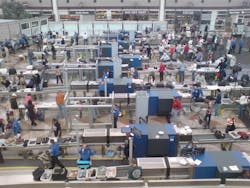IHS: IG report on lax TSA equipment maintenance could spur higher market revenues
Earlier this month, a report from the Office of the Inspector General for the Department of Homeland Security criticized the Transportation Security Administration for not properly managing the maintenance of screening equipment used in airports across the U.S. Although the TSA has four maintenance contracts valued at about $1.2 billion to cover both preventative and corrective maintenance on more than 9,000 pieces of checkpoint and checked baggage screening equipment, the report said the agency does not have adequate policies and procedures in place for carrying out maintenance-related duties. As a result, the inspector general said that TSA cannot be assured that preventative maintenance is being routinely performed or that all their equipment is in good working order.
The inspector general issued three recommendations for the TSA to follow including:
- Developing and implementing a preventative maintenance validation process to verify that required routine maintenance activities are completed.
- Develop and implement policies and procedures to ensure TSA personnel verify and document contractors’ completion of corrective maintenance actions
- Enhance future screening equipment maintenance contracts by including penalties for non-compliance if it is determined that maintenance was not performed, according to the contract and manufacturers’ specifications.
In a research note, Jared Bickenbach, market analyst for access control, fire and security at IHS, said the inspector general’s report could have two potential outcomes in the U.S. explosives, weapons and contraband detection equipment service and maintenance market. The first and most likely of the two scenarios is higher scrutiny of the TSA preventative maintenance program.
“If this scenario comes to fruition, IHS expects service and maintenance revenues to increase by several percentage points. In the short-term, IHS expects to see an increase in service and maintenance as a result of corrective maintenance performed on the existing installed base of explosives detection equipment. Consequently, IHS expects this to drive a small number of checkpoint equipment sales for equipment that is beyond repair or nearing the end of its useful life cycle. This finding is expected to result in the replacement of between 450 and 500 units each year, over the next three years,” wrote Bickenbach.
The second and less likely of the two scenarios would be that the status quo remains in place at the TSA which would also mean fewer service and maintenance revenues over the forecast period. However, that scenario seems less plausible because security at U.S. airports is expected to remain high.
“While the inspector general report is alarming, IHS expects the findings to drive positive change within the TSA and result in systematic changes in how preventive service and maintenance is performed. While the ultimate outcome of the government’s report is still uncertain, IHS expects the findings to result in increased service and maintenance revenues and a small number of product sales over the next three years,” concluded Bickenbach.
